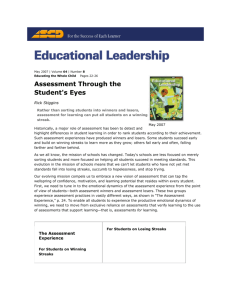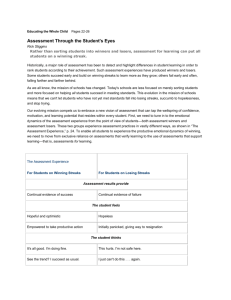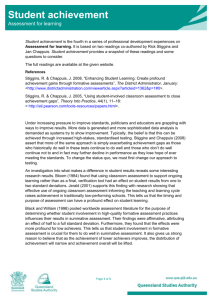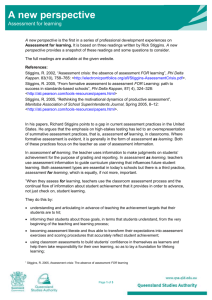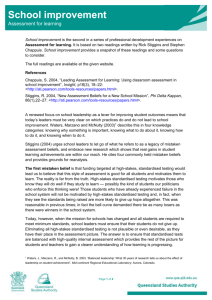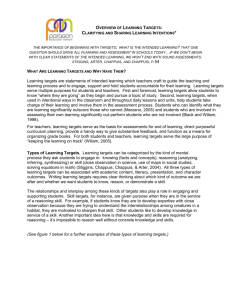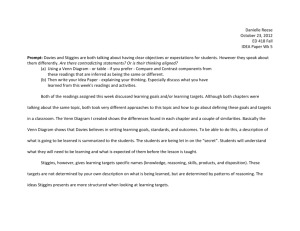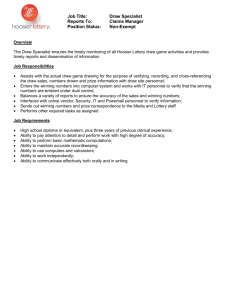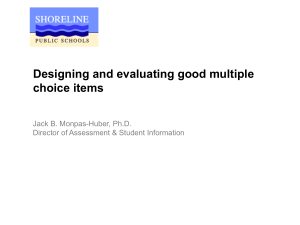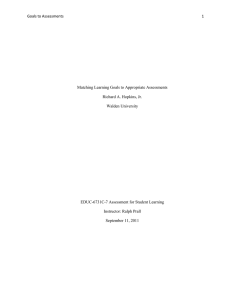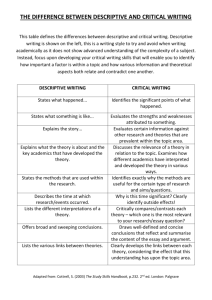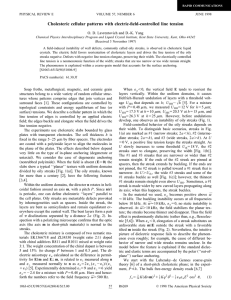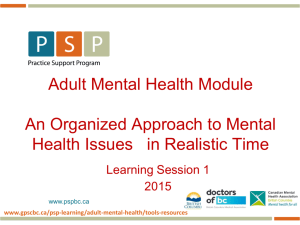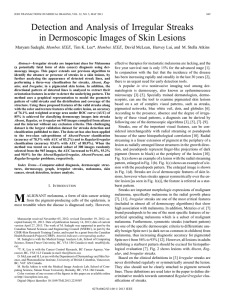Assessment for learning: Developing student understanding (DOCX
advertisement
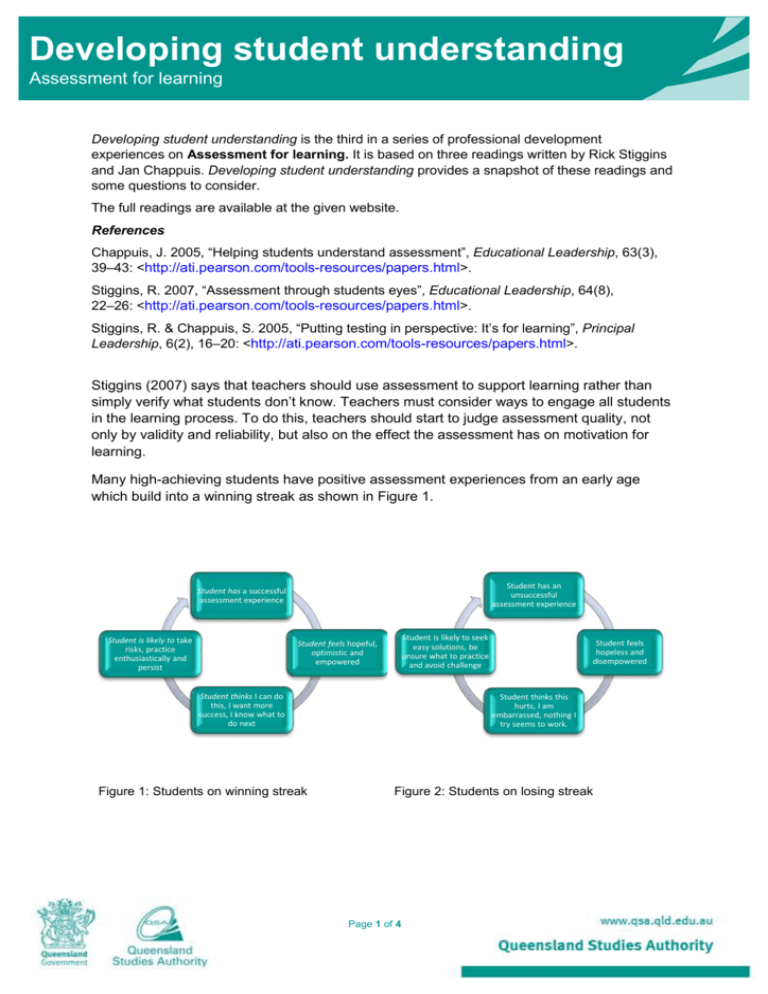
Developing student understanding Assessment for learning Developing student understanding is the third in a series of professional development experiences on Assessment for learning. It is based on three readings written by Rick Stiggins and Jan Chappuis. Developing student understanding provides a snapshot of these readings and some questions to consider. The full readings are available at the given website. References Chappuis, J. 2005, “Helping students understand assessment”, Educational Leadership, 63(3), 39–43: <http://ati.pearson.com/tools-resources/papers.html>. Stiggins, R. 2007, “Assessment through students eyes”, Educational Leadership, 64(8), 22–26: <http://ati.pearson.com/tools-resources/papers.html>. Stiggins, R. & Chappuis, S. 2005, “Putting testing in perspective: It’s for learning”, Principal Leadership, 6(2), 16–20: <http://ati.pearson.com/tools-resources/papers.html>. Stiggins (2007) says that teachers should use assessment to support learning rather than simply verify what students don’t know. Teachers must consider ways to engage all students in the learning process. To do this, teachers should start to judge assessment quality, not only by validity and reliability, but also on the effect the assessment has on motivation for learning. Many high-achieving students have positive assessment experiences from an early age which build into a winning streak as shown in Figure 1. Student has an unsuccessful assessment experience Student has a successful assessment experience Student is likely to take risks, practice enthusiastically and persist Student is likely to seek easy solutions, be unsure what to practice and avoid challenge Student feels hopeful, optimistic and empowered Student thinks I can do this, I want more success, I know what to do next Figure 1: Students on winning streak Student feels hopeless and disempowered Student thinks this hurts, I am embarrassed, nothing I try seems to work. Figure 2: Students on losing streak Page 1 of 4 Society’s spotlight on achievement is not focused on these students, however. Educators are concerned with ensuring that those students who traditionally do not experience success at school achieve levels deemed necessary for positive contribution to society. Figure 2 represents the assessment residue for that student. Teachers face two challenges: firstly, to ensure that young students don’t spiral into the cycle shown in Figure 2 and secondly, to break the cycle for older learners who are already experiencing it. The key to linking students into the winning streak as shown in Figure 1, according to Stiggins, is to use assessment to support learning rather than simply verify it as is our current practice. Assessment for learning sees students and teachers enter into a partnership of shared responsibility for learning. Teachers share standards with students using student-friendly language, modelling high-quality samples and providing descriptive feedback on attainment to date. Students work towards achieving the standards by examining the sample models, self-assessing and absorbing feedback given on their own work and determining action to be taken for improvement. As partners they develop a portfolio reflecting a shared understanding of the achievement target and the student’s own progress towards that standard. Stiggins et al. (2004) describe seven strategies to engage students in assessment for learning. Figure 3 merges these strategies into the three key questions that must be answered for effective formative assessment (Chappuis 2005, adapted from Atkin et al. 2001): Where am I going? Where am I now? How can I close the gap? Key questions Seven strategies toward assessment for learning Where am I going? 1. Provide a clear and understandable vision of the learning target. Where am I now? 3. Offer regular descriptive feedback. 2. Use examples of strong and weak work. 4. Teach students to self-assess and set goals. How can I close the gap? 5. Design lessons to focus on one aspect of quality at a time. 6. Teach students focused revision. 7. Engage students in self-reflection and let them document and share their learning. Figure 3: Key questions and strategies 2 | Developing student understanding Assessment for learning In order to clearly present students with their learning destination, current positioning and possible pathways to success, teachers themselves need to access and gain a clear vision of the learning and standards expected of students. Teachers then have to translate these into their classroom context and express them in a language appropriate to the student with accompanying models. Teachers also require access to student information and simple, reliable and efficient data entry and retrieval systems to ensure that they and their students can easily gain information about their learning. For this data/information to be useful it must be correct and sourced from valid and reliable assessments. Quality data/information is linked to student’s needs and achievements. Schools should focus their attention on ensuring these systems are in place to meet teachers’ needs and on providing ongoing professional development in assessing student achievement and using data to improve student learning. Once all students are engaged in valid assessment providing reliable and accurate information about their learning achievements and needs, being supported by strong descriptive feedback by teachers and each other with positive options for reaching clearly articulated goals, they will begin to build winning streaks as shown in Figure 1. With stronger motivation and clear achievable targets, students who have previously failed in school can achieve higher standards and go on to succeed at school and beyond. Key ideas Students are equally important users of formative assessment information. Students should be able to answer three basic questions: Where am I going? Where am I now? How can I close the gap? Students on winning streaks will have different assessment perceptions to students on losing streaks. Assessment for learning: creates positive assessment residue/experiences for all students turns day-to-day assessment into a teaching and learning process that enhances student learning involves seven specific steps is a partnership between teachers and students. Queensland Studies Authority Publication Date | 3 Questions to consider: 1. Consider the students you teach. How do the concepts of motivation and residue apply to your class? How do you currently select assessment? 2. How do your students feel about assessment? How do you know? 3. Review the seven strategies involved for assessment for learning. Which do you currently do? Which do you need to know more about? 4. Rate your confidence from 1 (little) to 5 (great) in the following. I am confident: I know the curriculum I am to teach I am clear on the standards expected my students know the standards expected I use valid and reliable assessment instruments to assess student learning I have access to the information I need to make teaching decisions my students have access to the information they need to make learning decisions I use data to improve student learning I regularly provide descriptive feedback to students so they can improve my students can self-assess effectively. 5. What individual action might you take to improve your confidence? Share your responses for Q4. What collective (school/faculty/year level) action might you take to improve overall confidence? 4 | Developing student understanding Assessment for learning
